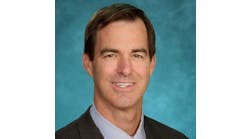Is COVID-19 an Extinction-Level Event for Primary Care?
During a virtual Capitol Hill briefing last week, three primary care practice leaders described being stressed to the breaking point financially because congressional funds have either not reached them or have been insufficient to allow them to pay their staffs. Some patients have even launched Go Fund Me campaigns to try to keep their physician practice’s doors open.
Guy Culpepper, M.D., is a family medicine doctor with Bent Tree Family Physicians in Frisco, Texas, which has 16 physicians and 70 employees. He said his practice was denied a PPP small-business loan and has had to furlough its 70 staff members. All the doctors have been working for free, doing courtesy calls with patients to check up on their diabetes and blood pressure. Culpepper said the practice has lost $500,000 in two months. “Our patients did a Go Fund Me to try to keep our doors open,” he said. “We have had not one dollar of government assistance. We understand our commitment to the country, but we are last in line for a loan. One of the greatest things we do is keep people out of the emergency room. We are doing the work out of love. We will have 30,000 people with no place to go if we close our doors.”
The April 30 briefing was held by the Pacific Business Group on Health, the American Academy of Family Physicians (AAFP), and the Partnership for Physician-Led Care to focus on the impact on the pandemic on primary care practices and patient access and the potential long-term impact of the collapse of the primary care system.
Beverly Jordan, M.D., a senior partner in a five-physician practice in Enterprise, Ala., joined the webinar with a fuzzy, poor internet connection, demonstrating the lack of broadband access in many rural locations. “We have exceedingly slow internet,” she said. “It has been down once already today. When we made the transition to telehealth, we had to use the audiovisual equipment we had in our office. We tried to purchase new equipment, but there was nothing we could afford. That would be a huge investment when we are not making any money. We chose to buy things to protect employees and patients. Also many patients don’t have access to devices or internet services.
Jordan said the pandemic has been the most difficult challenge she has ever faced, from a stress standpoint but also financially. “I employ 55 other people. We have made sacrifices to continue to employ them, and they are making sacrifices.” She said one nurse goes home after work and sews home-made masks. Chronic care managers are reaching out to the homebound community. The practice is working on food drives with home health agencies. “Primary care was made for a time like this,” she said, “but financially we are very much putting ourselves at risk. I am not sure how much longer we can sustain this financial crisis. We have a PPP loan and a Medicare advance payment, but it won’t keep us open for two more months.”
It is easy to imaging the emergency department as the front line, Jordan said, and they are, but they are not the only front line. Ninety percent of patients seek care in their physician’s office. “We have been the forgotten front lines. We have no access to PPE. It is all sent to hospitals, but we are doing the best we can. We need to keep our practices open. If they begin to close down, our emergency departments will be overwhelmed.”
Jordan said three new physicians who are graduating from medical school were preparing to join the practice in the fall. Now they are re-negotiating and contemplating cancelling those contracts because they cannot afford to support them. “That is unimaginable to me. We are in a rural underserved physician shortage area, but we don’t have enough money to pay them. The fact we can’t bring those physicians in is devastating to me.”
Rebecca Etz, Ph.D., co-director of the Larry A. Green Center at Virginia Commonwealth University and associate professor of Family Medicine and Population Health at VCU, has been conducting weekly surveys in partnership with the Primary Care Collaborative. She called the most recent results alarming, saying 11 percent said they will close in the next four weeks and more than 60 percent struggle to picture the future one month ahead. “The largest public health crisis could be an extinction-level event for primary care,” she said.
Tabitha Childers, M.S.N., a practice administrator with Autumn Road Family Practice in Little Rock, Ark., said her practice rapidly switched to telehealth but many older patients do not have the technology or broadband capacity to enable it. Her practice is part of an Aledade-backed ACO, and she said Aledade helped the practice navigate the financial, telehealth and PPE issues. Nevertheless, despite accelerated payments and a loan from the SMA, the practice furloughed 12 employees “We want to keep our doors open,” she said, but with overhead of $300,000 and losses of $70,000 to $80,000 per month, it could prove difficult. “We don’t want to see 15,000 Arkansans go without care.”
Elizabeth Mitchell, president and CEO of the Pacific Business Group on Health, said primary care can be at the center of a restructured health system if we properly invest in and support practices. But because of an over-reliance on specialty care, we are not getting the health outcomes we should expect, and we are at risk of losing 50 percent of practices in this country because we are not paying them effectively. “They are of critical importance to the entire healthcare system,” she said. “We have seen that physical health is linked with economic health. Primary care is the answer to that.”
Shawn Martin, senior vice president, advocacy, practice advancement for the American Academy of Family Physicians, participated in the briefing. Afterwards, on Twitter, he said, “these stories from physicians and clinicians on the front lines are both uplifting and haunting. Their commitment to their communities is uplifting; the resources we are giving them is deeply disappointing.”
During the briefing, Martin described a series of legislative recommendations:
Provide immediate financial assistance to ensure physician practices can survive the sudden and significant loss of revenue and can continue to serve their patients:
• Allocate $20 billion of HHS Provider Relief Funds specifically to physicians/physician practices.
• Codify and extend the Medicare Advanced Payment Program through at least the end of 2020
• Authorize CMS to provide per beneficiary per month payments to primary care physicians for all attributed Medicare, Medicaid and CHIP beneficiaries.
• Set aside SBA Paycheck Protection Program funds for physician practices.
Ensure long-term sustainability by expanding opportunities for physician practices to participate in value-based payment models that increase investment in primary care:
• Direct the Secretary of HHS to expand the Primary Care First model, slated to begin January 1, 2021, nationwide.
• Direct CMS to issue guidance to state health agencies to create flexibility allowing states to implement prospective, population-based payment models.
• Direct Secretary of HHS to immediately release Clinician Quality Improvement Contractors (CQIC) funding for primary care practices.
Promote telehealth coverage and reimbursement policies that maximize patients’ access to care while preserving and strengthening the physician-patient relationship:
• Encourage all commercial health plans, including self-funded ERISA plans, to cover and reimburse telehealth visits at parity with in-person services for the duration of the public health emergency.
• Require commercial, Medicare Advantage and Medicaid health plans to cover and reimburse all in-network providers for telehealth services, for duration of public health emergency.
• For plans that voluntarily choose to waive telehealth cost sharing, require plans to waive telehealth cost-sharing uniformly for all in-network providers, for duration of public health emergency.
Encourage benefit design that prioritizes primary care and reduces cost barriers:
• Allow High Deductible Health Plans to waive cost sharing for primary care visits for the duration of the public health emergency.
• Encourage all commercial health plans, including self-funded ERISA plans, to cover at least one primary care visit without cost sharing during the public health emergency.
• Require health plans to notify enrollees about all COVID-related coverage changes, including which services are available without cost-sharing.


